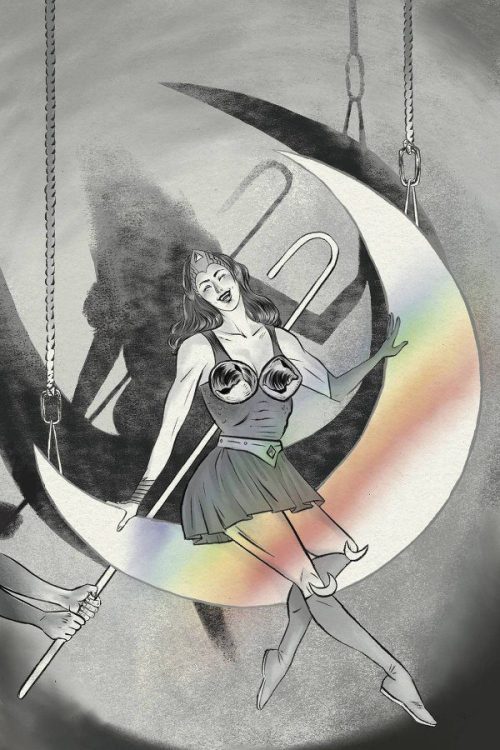Dark Horse’s Black Hammer: Visions #7 has a brilliant message at its core. Unfortunately, the whole issue gets muddied by a lot of confusing meta devices, and ends up not making a ton of sense. That said, it’s hard to fault writer Cecil Castellucci, artist Melissa Duffy, colorist Bill Crabtree, and letterer Nate Piekos for this issue falling flat. That’s because this issue revisits one of the very few moments from Black Hammer that just didn’t work. So, to really talk about why this issue struggles to deliver, we need to take a little detour and talk about why it didn’t work the first time, in Black Hammer: Age of Doom #6 & 7, a two-parter I’ve come to refer to as Black Hammer‘s “Limbo arc.”
All the Way Back in Black Hammer: Age of Doom #6 & 7…
There was a lot to love about the “Limbo arc” in Black Hammer: Age of Doom. Not only did writer Jeff Lemire, and guest artist Rich Tommaso, create a brilliant cast of “forgotten characters,” but they got to joyfully employ old, cheesy narrative devices. It was a taste of retro comics with a twist. A huge influence on the arc, it seems, was Grant Morrison’s Animal Man. But unlike the jaw-dropping finale to Animal Man, the “Limbo arc” ended on a note that was just… silly.
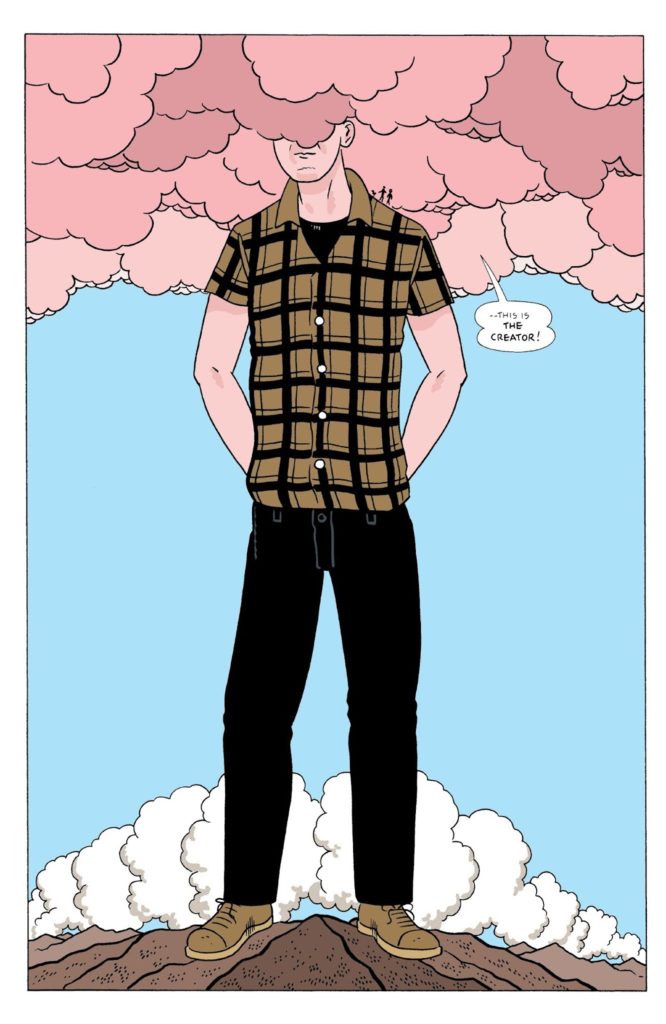
Escaping Limbo finally, Colonel Weird, Inspector Insector, and Golden Goose climb out of Jeff Lemire’s ear. Lemire, as a character in the issue, stands on a barren landscape. Pink clouds cover his face and he’s standing shoulder to shoulder with a whole slew of other writers/artists. It seems that Lemire wanted the meta twist that happened in Animal Man for Black Hammer. But unlike Animal Man, the seeds had not been sown. This twist came out of left field. And even worse, it wasn’t actually very meta. Lemire didn’t write himself into the comic as he actually is. He was a statue, there as some confusing plot device but nothing more. The meta commentary was lost in the details. Lemire appeared as the silent “Creator” and had nothing else to offer the story.
The very purpose of a meta device is to say something about reality. That’s what makes something meta in the first place. But this issue had nothing to say in a literal sense — the appearance of the creators wasn’t realistic enough to — and it has nothing metaphorical to say beyond “creators create.”
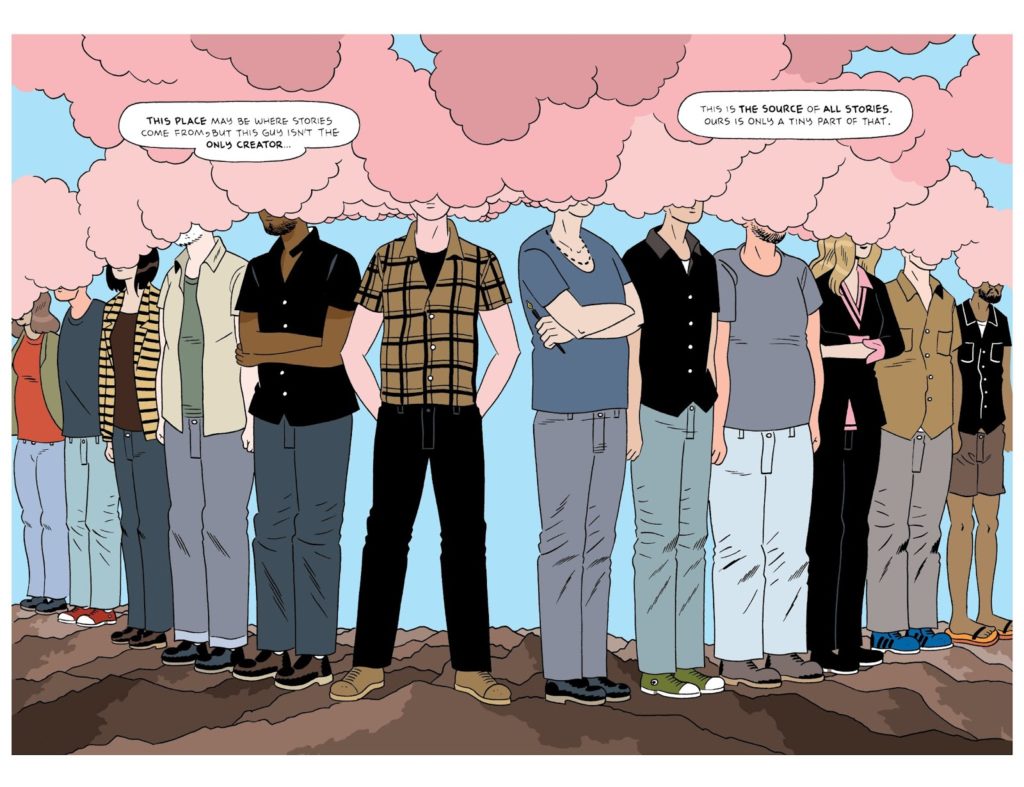
Writing
Black Hammer: Visions #7 inherits all the weaknesses of its predecessor. The meta commentary is garbled and confusing. Not only does Castellucci employ far too many “meta” devices — characters refer to “call sheets” and “communicators” through which they’ll be “called up to the main story,” characters rip through pages and dodge pens, writers and artists show up among the characters with inkblots for faces, the giant eyes of creators look through windows — but the devices used often don’t feel like they have a literal or figurative meaning. It also complicates some of the existing stories we already know. Golden Gail is seen pulling back a page and addressing a writer, yet nothing about her character in any other appearance suggests she knows she’s a comic book character.
That said, Castellucci still manages to make a point with this issue. Black Hammer: Visions #7 is about being underestimated. It’s about what someone is capable of when no one else believes in them. It even seems to be about glass ceilings and misogyny. Though the vast majority of the characters in this issue are women, it’s hard not to notice that our main character, Ms. Moonbeam, is a woman who is punished for her ambition. She’s created to be a refrigerator woman. It’s a brilliant commentary that’s hidden in what is unfortunately an overstuffed and confusing script. But much of that was simply inherited.
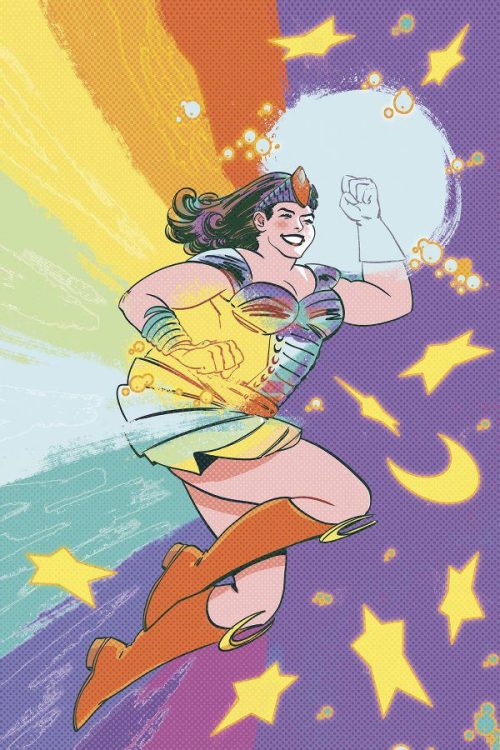
Art
Duffy’s art style often feels messy and scribbled onto the page. Sometimes, this effect works perfectly. When a giant being comes out of a portal to Hell, Duffy’s design is exactly what is called for. But in characters like Grizzly and Golden Gail, their style sometimes feels like a couple drafts from being complete. It’s entirely possible, though, that that is part of the point. For one thing, this is an issue about early drafts of comics. And Duffy’s art evolves in this issue. They begin by showing Ms. Moonbeam in panel that looks a little rushed. But by the end of the issue, she looks fully formed. Moonbeam’s outlines are neat, her proportions are right. She becomes a real comic book character.
Coloring
It’s not surprising that a comic with a character like Ms. Moonbeam would be so colorful. But Crabtree really plays with that concept. For one thing, when we first see Moonbeam, she’s experiencing the most relevant moment of her life. Colors swirl around her and she looks alive. Then, as she and the other inhabitants of limbo discuss it for years and years, trying to hold onto the relevance they felt, the table and walls around them fade more and more. Moonbeam’s life becomes rather monochromatic, until her explosive return to reality.
Lettering
Piekos’ letters are brilliantly done. As Inspector Insector and Ms. Moonbeam discuss their time with Colonel Weird, something occurs to Moonbeam. Insector describes what a big part he played and how he’ll surely be part of the main story soon. But, in small lettering, Moonbeam simply says “It was a cameo.” The font size tells us she says it more to herself than anything else, telling us so much about her self-worth in that moment. And later, when she auditions for a group of creators, Piekos lays out the steps across the page. The little labels for each of them look like they’re written on a typewriter, reminding us again that Moonbeam is a comic book character and nothing more.
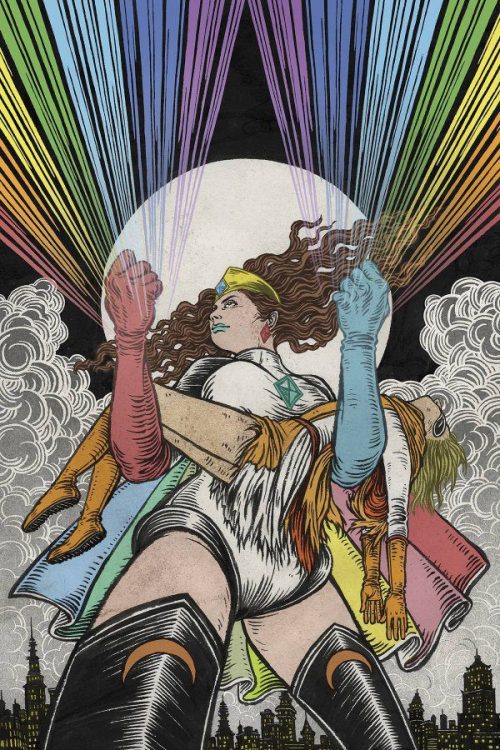
Dark Horse’s Black Hammer: Visions #7 is a difficult read. It retreads the rockiest part of Black Hammer‘s history, and has no more luck making any sense of it. Despite all of this, this creative team does manage to say something worthwhile with this issue. Their meditation on glass ceilings and refrigerator women hits its mark. Unfortunately, it has to dodge a lot of clunky “meta” devices in order to get there. Pick up Black Hammer: Visions #7, out from Dark Horse August 18th, at a comic shop near you!

